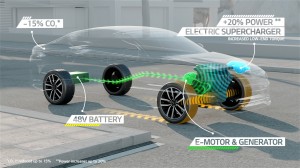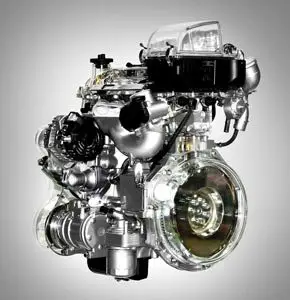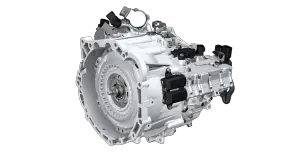Kia is planning on adding smaller turbocharged engines across their lineup in the coming years so that they can reduce emissions!
That is on top of their plans to introduce a range of electric vehicles and hybrids.
Their goal is to hit the European CO2 emissions target of 95g/km by the end of 2021.
The Koreans took the opportunity to show off some of the work being done in this area at the Geneva motor show.
That included showing off an efficient 7-speed dual clutch transmission (DCT) and a mild hybrid system that has been designed to add more power (20%) whilst reducing CO2 emissions by 15%.
They also took the time to show of the new Soul EV, the first full electric vehicle that the company has ever produced.
A Combination Of Technologies Will Reduce The Emissions
Hyundai Motor Group European Technical Centre powertrain manager Michael Winkler spoke at the show, saying that it was going to be a series of measures that Kia and Hyundai would put in place to reduce emissions as opposed to one single thing.
He believes that it will be a combination of three things that will do the trick.
- The first is to create more efficient powertrains.
- Mass reduction is second on the list
- The third and final step is to improve aerodynamics.
Kia is not just looking at making these changes to petrol powered cars, but to all powertrains across their lineup.
 Winkler believes that to get down to that 95 gram number mentioned earlier, every engine will need to have improved fuel efficiency.
Winkler believes that to get down to that 95 gram number mentioned earlier, every engine will need to have improved fuel efficiency.
Gasoline, diesel, and electric will all be looked at, which Kia proved by showing off the mild hybrid system in Geneva.
That particular system employs a 48-volt lead carbon battery that powers a small electric motor. It can be paired with both petrol and diesel engines, with Kia already confirming that it will start to be rolled out on some of the smaller models.
That means it may very well appear in the next generation cee’d and Forte models.
The highly-advanced hybrid system that was on display on Geneva was definitely one that was best suited to a D-Segment model like the Optima.
However, by implementing some modest technical changes, the setup would also make it a good fit for smaller vehicles such as Rio and Soul.
Small T-GDI Turbo Engines
 Another way that Kia plans on reducing emissions and fuel use is with the development of downsized turbocharged engines.
Another way that Kia plans on reducing emissions and fuel use is with the development of downsized turbocharged engines.
One example of that type of unit would be the 1.0-liter 3-cylinder turbo-petrol TGDi engine that they showed off at last year’s show in Geneva.
The aforementioned powertrain would fit nicely in C-segment models in Europe, with the Cerato and Cee’d the obvious beneficiaries.
That said, the same turbo unit could also fit in the B-segment cars, with the Rio GT hot-hatchback the most obvious recipient of that type of set-up.
Kia’s New DCT Transmission
 Another addition to all next generation Kia models will be the 7-speed dual clutch gearbox.
Another addition to all next generation Kia models will be the 7-speed dual clutch gearbox.
Mr. Winkler said that he was confident that Kia would not run into the same performance issues that plagued Volkswagen when they introduced their own DCT system.
Kia plans on backing up that claim by offering a 7-year warranty in Europe for all vehicles that have the DCT system in place.